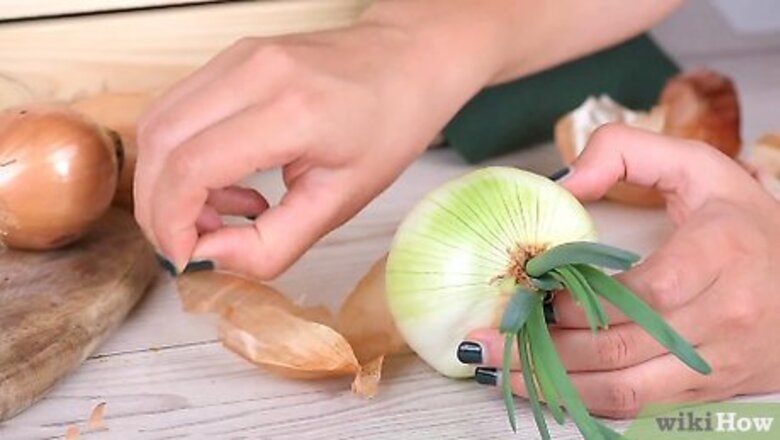
views
Preparing the Sprouted Onions
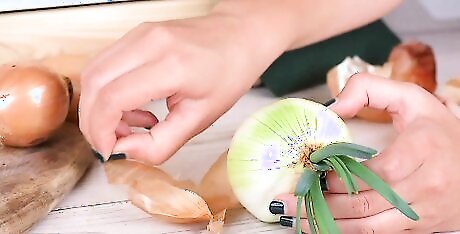
Peel off sprouted onion’s papery outer skin. Dig your fingernails into the skin at the top of the onion bulb and rip it off piece by piece. Discard the skin when you are done.
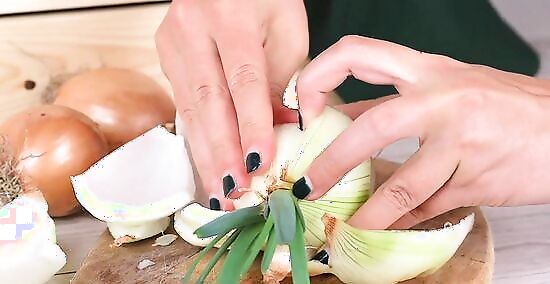
Use a knife to cut the onion's layers from the sprouts. The sprouts grow at the center of the onion bulb. Slice through onion’s layers vertically while avoiding the sprouts. Repeat on the other side then carefully slice off the onion's layers. If you don’t have a knife, peel off the onion’s layers individually with your hands. You can eat the onion layers if they are firm and crisp, though make sure you wash them first! If they are soft and mushy discard them.
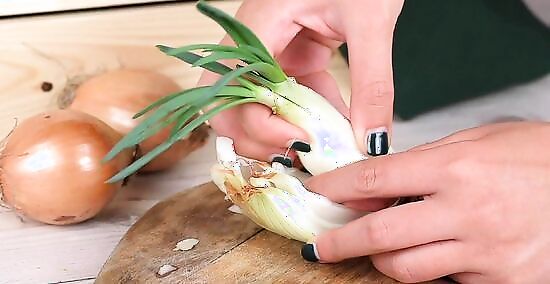
Separate the onion sprouts. You will likely find a few sprouts growing at the center of the onion bulb. Some will protrude from the bulb, others will not. Use your hands to gently separate the sprouts from one another so they don't need to compete for space. Given proper care, each sprout can grow into a brand new onion bulb!
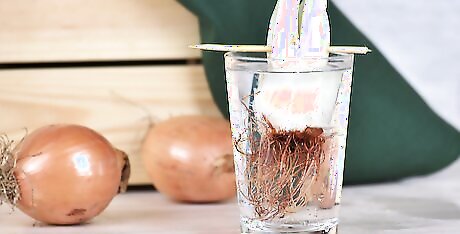
Place the sprouts in water until roots grow. You can keep the sprouts in individual cups, glasses of bowls of water. Within a few days white roots will form at the bottom of each sprout. If white roots are already present you can plant the sprouts straight into the soil. If you see dry, brown roots on a sprout, it means they are already dead. You want to wait for new white roots to form.
Planting the Sprouted Onions
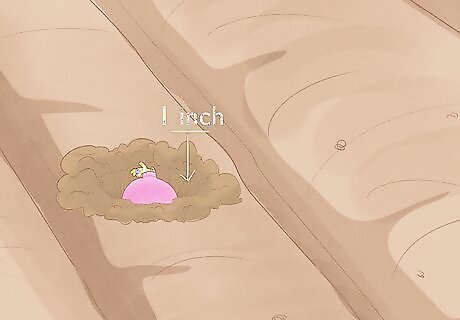
Plant the sprouts 1 inch (2.5 cm) deep in quality potting soil. Dig an individual hole for each sprout, and cover it so only the green part sticks out. Keep each sprout at least 3 inches apart (7.5 cm), or in separate pots, so they don't need to compete for space. Consider applying a thin layer of mulch to the soil to aid the growth process. Whether indoors or outdoors, ensure the plants get ample sunlight. If you live in a cold climate, plant the sprouts in pot plants inside and gradually introduce them to the outdoors. The onions have been inside for some time and will need to adjust. During the winter in cold climates keep the plants indoors at all time to ensure they stay alive. Expect to see onion bulbs form after 60-80 days!
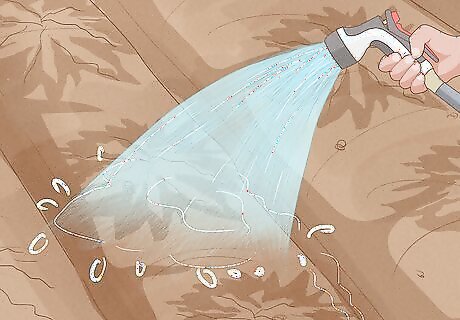
Water the plants every few days. Onions are resilient, but need plenty of water to grow. Pour a little water from a gardening can, or use a hose, on the soil around the onions, not the plant itself. Ensure the soil is well drained. If you are using mulch, the onions will only need 1 inch (2.5 cm) of water a week.
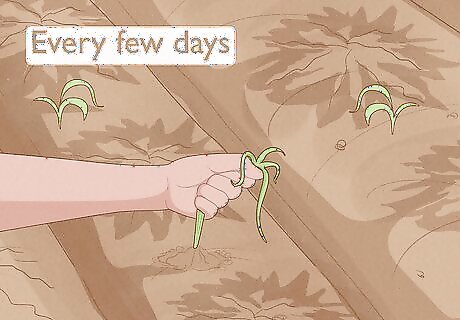
Check the plants for weeds every day and remove any that appear. As the onions grow, weeds will inevitably emerge around them. Wear garden gloves and ensure you pull the weeds out by the roots so they don't grow back.
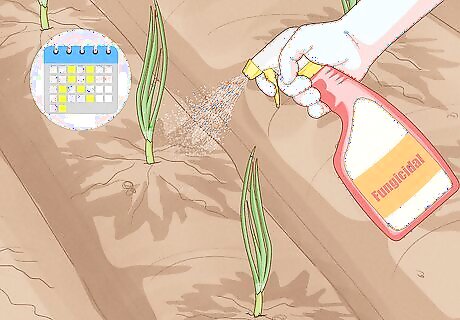
Treat the plants twice a week with fungicidal spray. The spray will prevent harmful fungi from destroying your plants and ensure they remain healthy. A few short sprays on each plant should be enough. If you prefer not to use synthetic compounds, oxidate or copper sprays are good alternatives.
Harvesting the Onions
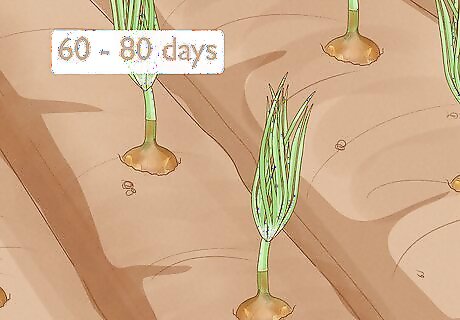
Look for signs that the onions are ready for harvest. The onions should be grown after 60-80 days. They will, however, go rotten if you leave them ripe for too long. You will know an onion is ready when: The onion bulb fully emerges from the soil. The green sprouts wilt and/or turn brown. Flowers stalks appear.
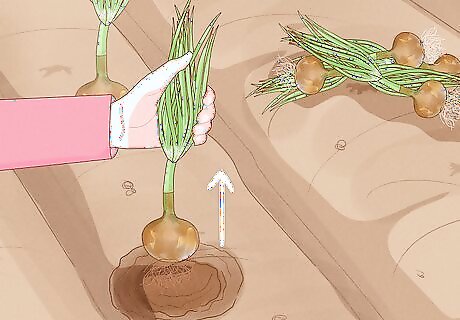
Pull the onions from the ground once they have ripened. When the sprouts have turned to full onion bulbs that look ready for consumption, you can harvest them. Don't be scared of ripping out the roots.
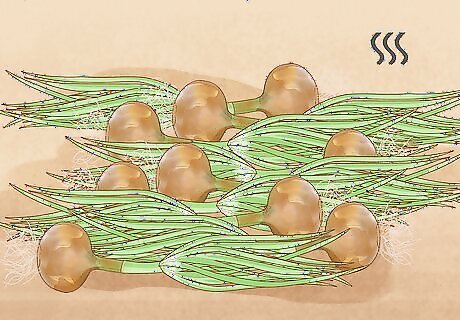
Place the onions outside on dry ground for a few days. Handle them carefully and lay them out in a single layer to avoid bruises.This will begin the curing process and allow excess soil to fall from their skins.
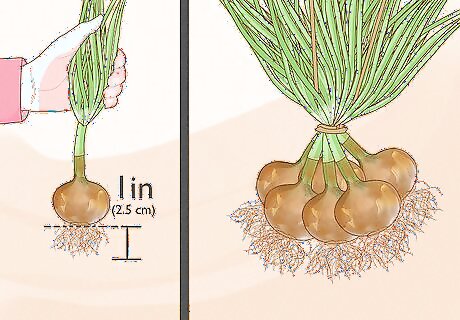
Clip the roots and cut 1 inch (2.5 cm) from the onion's foliage. You can use a knife or garden scissors. This will stop the onions from decaying in storage.
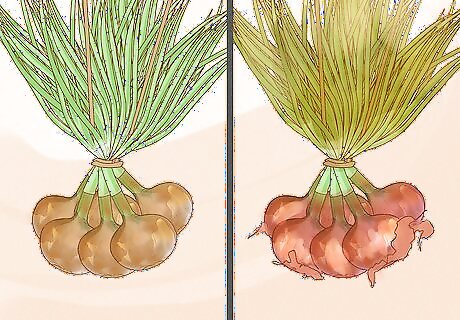
Keep the onions on cool, dry ground until dry outer skins form. You will know they are cured when the foliage shrivels and the onions produce a papery outer layer. A shed or garage floor works well; anywhere that is cool, shaded and dry. The curing process will normally take around one month. You can skip the curing process if you wish to eat the onions straight away but storing them without curing first carries a high risk of mildew and rot. If you can't find anywhere dry enough to cure the onions, consider using a dehumidifier to keep moisture levels down..
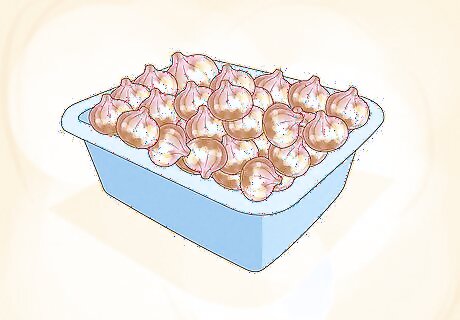
Store the onions in baskets or dry mesh bags. This will ensure they remain in the right conditions and do not damage other fruit. The onions are now ready for consumption! You will want to eat the onions within a single month. If an onion sprouts, you can replant it again!



















Comments
0 comment